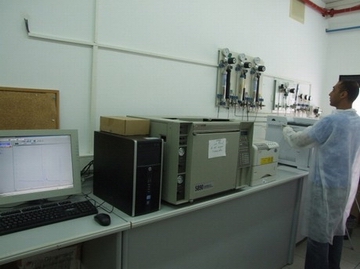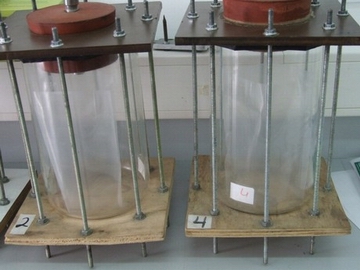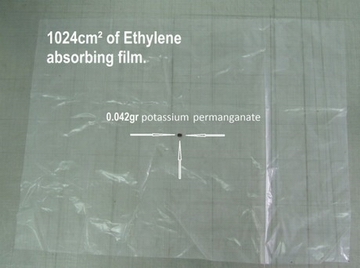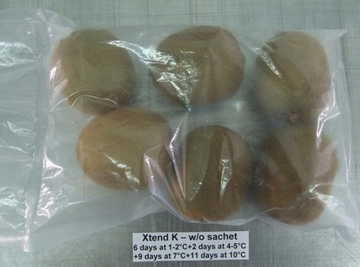In order to determine the true effectiveness of modified atmosphere packaging claiming to have ethylene absorbing capabilities, StePac has conducted a number of studies at its Post harvest and Polymer lab under the supervision of lab manager Harel Nagan. The findings are resounding and suggest that the absorption capability is often so low, that such films have a minimal if any effect on controlling head space ethylene concentrations in post harvest applications.

StePac has conducted numerous studies to determine the effectiveness of films claiming to have ethylene absorbing properties.
In one particular study, the ability of 3 commercially available products and an experimental film to absorb ethylene when placed in hermetically sealed cells containing known ethylene concentrations were tested and compared.
The volume of the cells was 3.5 L and the initial concentration of ethylene ranged between 100-150 ppb. The surface area of the films placed in the cells was ~1000cm2. Samples were taken through a septum at regular intervals during storage at room temperature and ethylene concentration measured using a Gas Chromatograph. The reduction of concentration of ethylene in cells containing 1000 cm2 of each of the films was minimal after 24 hours incubation. On the contrary, ethylene concentration in cells in which commercially available 5g ethylene absorbing sachets based on potassium permanganate were placed was undetectable after 2 hours and even a granule of the potassium permanganate was sufficient to soak up all of the ethylene in the hermetically sealed cells!!!! (Fig.2)

Fig.1: Hermetically sealed cells in which the ability of commercially available ethylene absorbing films to absorb ethylene was studied.

Fig. 2. One grain of Potassium permanganate weighing 0.042 Kg was sufficient to soak up all of the ethylene in the hermetically sealed cell within 2 hours whereas ~1000cm2 of film which is claimed to have ethylene absorbing properties barely absorbed any after 24 hours.
An additional study was conducted in which 6 kiwi fruit were packed in small bags of equal surface area made from the films (Fig.3). Kiwi are extremely sensitive to ethylene and concentrations of several ppb will induce softening. At least 5 replicates of each film were prepared. The bags were stored for 6 days at 1-3°C, followed by 2 days at 4-5°C, 9 days at 7°C and then 5 days at 10°C. At given intervals, samples were taken from the head space of the bags through septum's and ethylene concentration measured using a Gas Chromatograph. Very small amounts of ethylene were absorbed by the films in comparison to the commercially available ethylene absorbing sachets which suggests that they are inadequate and the claims surrounding their capabilities are dubious.

Fig .3: Representative photos of the packaging containing kiwi
The findings of these studies suggest that commercially available films claiming to have ethylene absorbing properties are ineffective, supports those of Prominent UC Davis scientists. Suslow reported in 1997 (1) that only the potassium permanganate-based product, Ethylene Control, could be shown to remove ethylene from an enclosed air space whereas none of the zeolite-based products caused a measurable reduction in ethylene under these conditions. Faubion and Kader (2) tested commercially available packaging claiming to scrub ethylene from the packaging head space and found that it did not remove a measurable amount of ethylene during a 24 hour period when placed in a 1 quart jar containing 1ppm ethylene. Tests were conducted at both high and low humidity.





